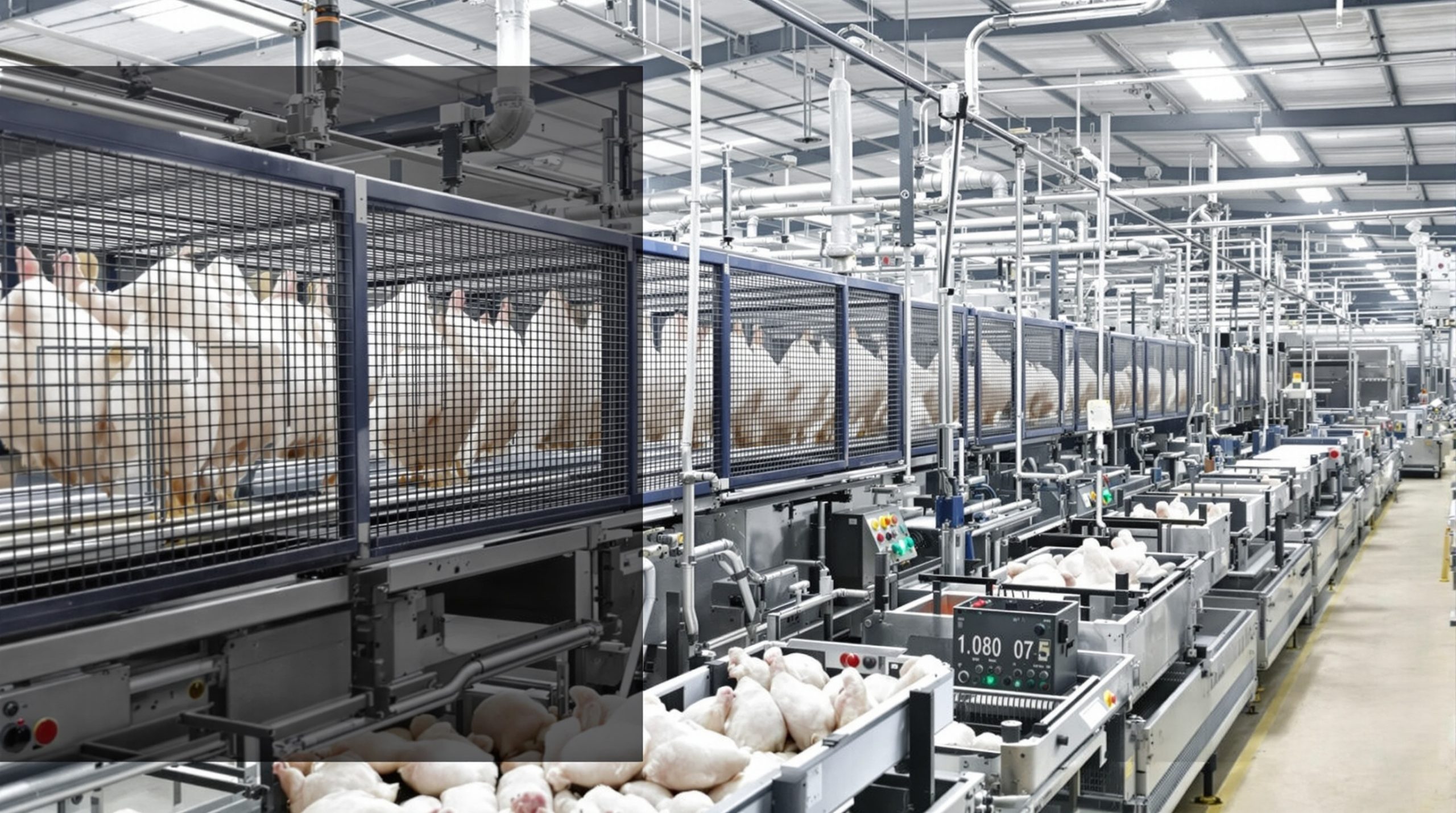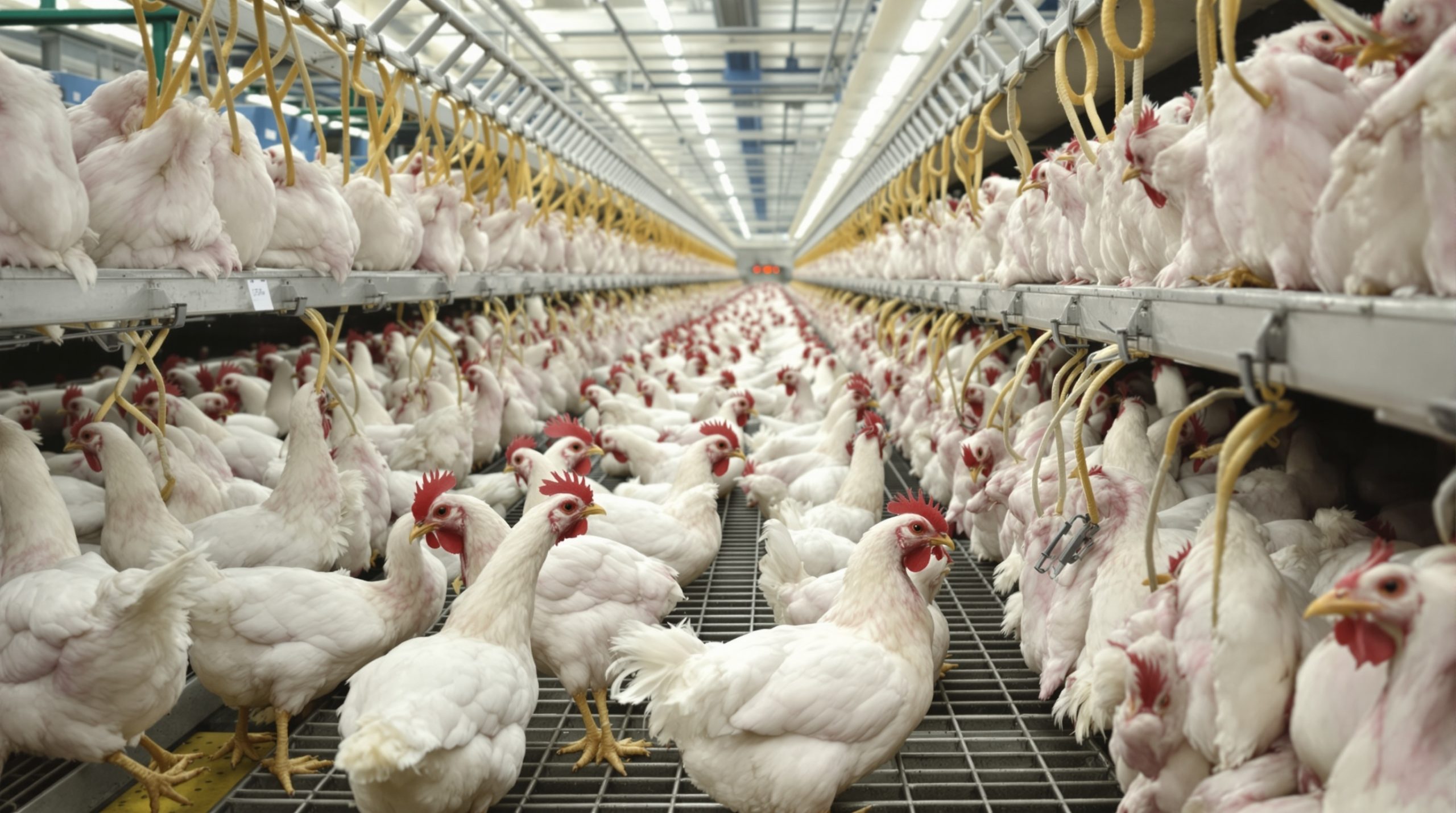The global poultry processing equipment market is witnessing unprecedented growth, with projections indicating a remarkable expansion to $7.71 billion by 2034. This surge represents a significant evolution in the meat processing industry, driven by increasing protein consumption worldwide, technological advancements in automation, and growing demand for processed poultry products. As consumer preferences shift toward convenient, ready-to-cook poultry options, manufacturers are investing heavily in sophisticated equipment that enhances efficiency, improves product quality, and ensures compliance with stringent food safety regulations. This comprehensive market transformation is reshaping how poultry processors approach operations, technology adoption, and strategic planning for future growth.
Current State of the Poultry Processing Equipment Market
The poultry processing equipment market currently stands at a pivotal juncture of transformation. With an estimated value of approximately $4.5 billion in 2023, the industry has already established a robust foundation for future growth. This market encompasses a diverse range of equipment including stunning and killing machines, scalders, defeathering equipment, evisceration machines, chilling equipment, cut-up and deboning systems, and packaging solutions.
Several key regions dominate the market landscape, with North America and Europe leading in technological advancement and market share. However, Asia-Pacific is emerging as the fastest-growing region, propelled by rapid industrialization in countries like China, India, and Thailand. This regional growth is further supported by increasing meat consumption patterns and a shift toward processed food products across developing economies. According to our latest industry insights, the market is experiencing particularly strong momentum in regions where protein consumption is rising alongside disposable income.
Key Drivers of Market Growth to $7.71 Billion
The projected growth to $7.71 billion by 2034 is underpinned by several critical market drivers that are creating favorable conditions for expansion:
Rising Global Protein Consumption
Worldwide protein consumption continues to rise steadily, with poultry emerging as the preferred protein source due to its relative affordability, nutritional benefits, and lower environmental impact compared to red meat alternatives. This sustained demand is directly influencing the need for more efficient processing equipment that can handle higher volumes while maintaining quality standards.
Technological Advancements and Automation
The integration of advanced technologies such as artificial intelligence, machine learning, computer vision systems, and robotics is revolutionizing poultry processing operations. These technologies enable processors to achieve higher throughput rates, improved precision in cutting and deboning, reduced labor dependency, and enhanced food safety monitoring. The ability to process more birds per hour with fewer workers is becoming increasingly critical as labor costs rise and skilled worker availability decreases.
Food Safety Regulations and Compliance
Stringent food safety regulations across global markets are compelling processors to invest in equipment that ensures compliance while minimizing contamination risks. Modern poultry processing systems now incorporate features specifically designed to reduce bacterial contamination, maintain proper temperature control, and implement effective cleaning and sanitation processes. This regulatory environment is driving significant investment in equipment upgrades throughout the processing chain.
Changing Consumer Preferences
Consumer demand is increasingly shifting toward value-added, convenient poultry products that require specialized processing equipment. The growing popularity of pre-marinated, portion-controlled, and ready-to-cook poultry items necessitates more sophisticated processing capabilities including precision cutting, product handling, and packaging solutions.
Technological Innovations Shaping the Market Future
The trajectory toward $7.71 billion is being accelerated by several groundbreaking technological innovations that are redefining industry capabilities:
AI-Powered Inspection and Sorting Systems
Artificial intelligence and computer vision technologies are increasingly being deployed for automated inspection and sorting of poultry products. These systems can detect quality issues, foreign objects, and anatomical abnormalities at speeds far exceeding human capabilities, while maintaining consistent accuracy levels. This technology is particularly valuable for identifying defects that might pose food safety risks or affect product quality.
Robotics and Automated Cutting
Robotic cutting and deboning systems represent one of the most significant advancements in the industry. These systems utilize 3D imaging and precise robotic arms to perform complex cutting operations with minimal human intervention. The result is higher yield recovery, consistent product quality, and reduced labor requirements. Manufacturers who implement these systems often see substantial improvements in operational efficiency and product consistency.
IoT and Data Analytics Integration
The integration of Internet of Things (IoT) sensors throughout the processing line enables real-time monitoring of equipment performance, product quality, and operational efficiency. This data-driven approach allows processors to identify bottlenecks, optimize maintenance schedules, and make evidence-based decisions to improve overall plant performance. Many processors are finding that the initial investment in IoT capabilities quickly pays for itself through efficiency gains, as demonstrated by our free ROI & Carcass Balance Calculator which helps companies analyze potential returns on technology investments.
Market Segmentation and Growth Opportunities
The path to $7.71 billion will see different market segments growing at varying rates, creating diverse opportunities across the value chain:
Equipment Type Breakdown
- Killing and defeathering equipment: Expected to maintain steady growth due to the fundamental nature of these processes in all poultry operations
- Evisceration and giblet handling systems: Projected to see significant innovation focusing on hygiene and cross-contamination prevention
- Cut-up and deboning equipment: Anticipated to be the fastest-growing segment due to increasing demand for portioned products and the high labor costs associated with manual deboning
- Marinating and tumbling systems: Expected to grow substantially as consumer preference for value-added, seasoned products continues to rise
- Packaging equipment: Projected strong growth driven by demand for extended shelf-life solutions and convenient packaging formats
Application-Based Growth
Different poultry types require specialized processing approaches, creating varied growth opportunities:
- Chicken processing: Represents the largest market share due to global chicken consumption trends
- Turkey processing: Growing steadily with seasonal peaks and increasing year-round consumption in some markets
- Duck processing: Experiencing faster growth in Asian markets where duck consumption is traditionally higher
- Other poultry: Niche segments including geese, quail, and other specialty birds showing growth in premium markets
Regional Market Analysis and Growth Projections
The journey to $7.71 billion will be characterized by distinct regional growth patterns and market dynamics:
North America
Currently holding the largest market share, North America’s growth is being driven primarily by equipment replacement cycles and upgrades focused on automation and labor reduction. The region’s mature market is characterized by high adoption rates of advanced technologies and stringent regulatory compliance requirements. Manufacturers in this region are particularly focused on maximizing yield and minimizing labor through technological solutions.
Europe
The European market remains a significant contributor, with emphasis on equipment that addresses animal welfare concerns, sustainability initiatives, and energy efficiency. European regulations often lead global standards in areas such as humane processing and environmental impact, influencing equipment design and functionality worldwide.
Asia-Pacific
Projected to be the fastest-growing regional market, Asia-Pacific’s expansion is fueled by rapid industrialization of poultry processing in countries like China, India, Vietnam, and Indonesia. The region is seeing a transition from manual processing to automated systems as labor costs rise and food safety standards become more stringent. Many processors in this region are leapfrogging technologies, moving directly to advanced systems rather than following the gradual evolution seen in Western markets.
Latin America
With major poultry producing countries like Brazil leading the way, Latin America represents a significant growth opportunity, particularly in export-oriented processing facilities that require equipment meeting international standards. The region’s strong agricultural base and expanding processing capabilities position it as an increasingly important market for equipment manufacturers.
Challenges and Potential Market Restraints
Despite the positive growth trajectory, several challenges could impact the market’s expansion to $7.71 billion:
High Initial Investment Requirements
The substantial capital expenditure required for modern processing equipment creates barriers to entry, particularly for smaller processors. Comprehensive processing line upgrades can represent multi-million-dollar investments, necessitating careful financial planning and return-on-investment analysis. This challenge is especially pronounced in developing markets where capital constraints may limit technology adoption rates.
Technical Expertise and Maintenance
Advanced processing equipment requires specialized technical knowledge for operation and maintenance. The shortage of qualified technicians in many regions can create operational challenges and increase downtime risks. Equipment manufacturers are increasingly addressing this through remote monitoring, predictive maintenance capabilities, and comprehensive training programs.
Market Consolidation Pressures
Industry consolidation among poultry processors may limit the total number of potential customers while increasing the scale of individual projects. This trend creates both challenges and opportunities for equipment manufacturers, requiring strategic approaches to market development and customer relationships.
Sustainability and Future Market Direction
As the market moves toward the $7.71 billion milestone, sustainability considerations are increasingly influencing equipment design and purchasing decisions:
Water and Energy Efficiency
Next-generation processing equipment is being engineered with significantly reduced water and energy consumption requirements. Innovations include closed-loop water recycling systems, heat recovery technologies, and energy-efficient motors and drives. These features not only reduce environmental impact but also deliver substantial operational cost savings over equipment lifecycles.
Waste Reduction and By-product Utilization
Advanced equipment designed to maximize yield and facilitate by-product recovery is gaining market share. Systems that enable the efficient collection and processing of feathers, offal, and other by-products for rendering or other value-added applications are becoming standard in new installations. This trend aligns with broader circular economy principles gaining traction throughout the food industry.
Conclusion
The poultry processing equipment market’s projected growth to $7.71 billion by 2034 represents a transformative period for the industry. This expansion will be driven by a combination of increasing global protein demand, technological innovation, changing consumer preferences, and the ongoing pursuit of operational efficiency. For poultry processors, this evolution presents both challenges and opportunities, requiring strategic investment decisions and careful technology selection to remain competitive.
As the industry continues to evolve, partnerships between processors and equipment manufacturers will become increasingly collaborative, focusing on customized solutions that address specific operational requirements and market demands. Companies seeking to capitalize on these market trends should consider a comprehensive assessment of their current capabilities and future needs. To discuss how these industry developments might impact your specific operations or to explore equipment solutions aligned with your processing requirements, contact our team of industry specialists for personalized consultation.
References
[1] Markets and Markets – Poultry Processing Equipment Market Report – https://www.marketsandmarkets.com/Market-Reports/poultry-processing-equipment-market-230779090.html
[2] Grand View Research – Global Poultry Processing Equipment Market Size Report – https://www.grandviewresearch.com/industry-analysis/poultry-processing-equipment-market
[3] Food and Agriculture Organization (FAO) –



